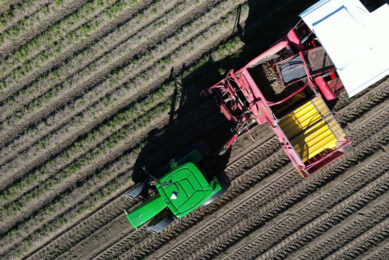Nanosensor alerts smartphone when plants are stressed

MIT engineers can closely track how plants respond to stresses using sensors made of carbon nanotubes.
MIT engineers have developed a way to closely track how plants respond to stresses such as injury, infection, and light damage, using sensors made of carbon nanotubes. These sensors can be embedded in plant leaves, where they report on hydrogen peroxide signaling waves.
Sensors distinguish between different types of stress
Plants use hydrogen peroxide to communicate within their leaves, sending out a distress signal that stimulates leaf cells to produce compounds that will help them repair damage or fend off predators such as insects. The new sensors can use these hydrogen peroxide signals to distinguish between different types of stress, as well as between different species of plants.
“Plants have a very sophisticated form of internal communication, which we can now observe for the first time. That means that in real-time, we can see a living plant’s response, communicating the specific type of stress that it’s experiencing,” says Michael Strano, the Carbon P. Dubbs Professor of Chemical Engineering at Massachusetts Institute of Technology (MIT).
New strategies to improve crop yields
This kind of sensor could be used to study how plants respond to different types of stress, potentially helping agricultural scientists develop new strategies to improve crop yields. The researchers demonstrated their approach in eight different plant species, and they believe it could work in many more.
The researchers tested strawberry plants, spinach, arugula, lettuce, watercress, and sorrel, and found that different species appear to produce different waveforms – the distinctive shape produced by mapping the concentration of hydrogen peroxide over time. They hypothesize that each plant’s response is related to its ability to counteract the damage. Each species also appears to respond differently to different types of stress, including mechanical injury, infection, and heat or light damage.
“This waveform holds a lot of information for each species, and even more exciting is that the type of stress on a given plant is encoded in this waveform,” Strano says. “You can look at the real time response that a plant experiences in almost any new environment.”
Text continues underneath image
Infrared camera connected to a Raspberry Pi
The near-infrared fluorescence produced by the sensors can be imaged using a small infrared camera connected to a Raspberry Pi, a $ 35 credit-card-sized computer similar to the computer inside a smartphone. “Very inexpensive instrumentation can be used to capture the signal,” Strano says.
Applications for this technology include screening different species of plants for their ability to resist mechanical damage, light, heat, and other forms of stress, Strano says. It could also be used to study how different species respond to pathogens, such as the bacteria that cause citrus greening and the fungus that causes coffee rust.
“One of the things I’m interested in doing is understanding why some types of plants exhibit certain immunity to these pathogens and others don’t,” he says.
Urban farms
Strano and his colleagues in the Disruptive and Sustainable Technology for Agricultural Precision interdisciplinary research group at the Singapore-MIT Alliance for Research and Technology (SMART), MIT’s research enterprise in Singapore, are also interested in studying is how plants respond to different growing conditions in urban farms.
Shade avoidance
One problem they hope to address is shade avoidance, which is seen in many species of plants when they are grown at high density. Such plants turn on a stress response that diverts their resources into growing taller, instead of putting energy into producing crops. This lowers the overall crop yield, so agricultural researchers are interested in engineering plants so that don’t turn on that response.
“Our sensor allows us to intercept that stress signal and to understand exactly the conditions and the mechanism that are happening upstream and downstream in the plant that gives rise to the shade avoidance,” Strano says
Join 17,000+ subscribers
Subscribe to our newsletter to stay updated about all the need-to-know content in the agricultural sector, two times a week.



